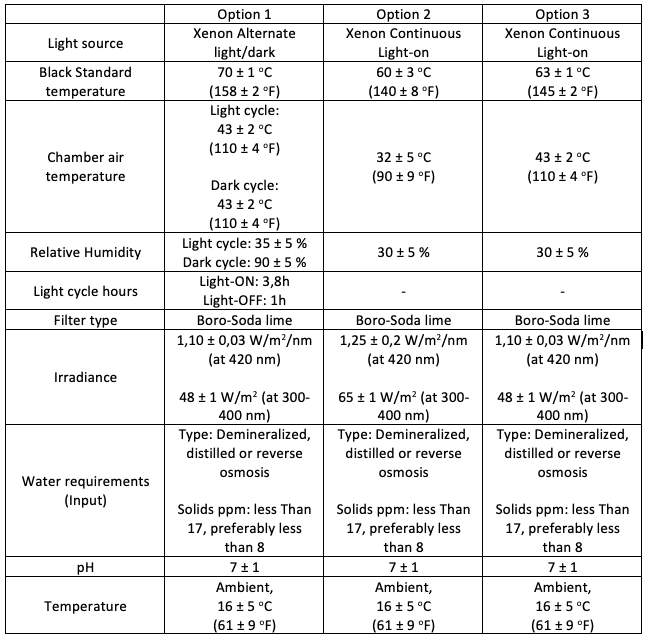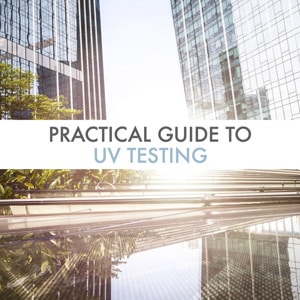AATCC 16.3
Colorfastness to light: Xenon-Arc
Micom offers AATCC 16.3 testing as part of its UV testing services. AATCC 16.3 – Colorfastness to light: Xenon-Arc – provides procedures based on practice ASTM G155 or ISO 4892-2; its ISO counterpart. The ability of a textile material to resist sun exposure can be assessed through accelerated aging by xenon-arc test devices. These apparatus use xenon in a precision gas discharge lamp in a sealed quartz tube as the source of irradiance. The latter emits radiations from below 270 nm in the UV to the visible spectrum and the infrared. For vehicle interiors, we would recommend consulting SAE J2412.
Uses and factors to be considered for colorfastness to Light
 By exposing specimens of a textile material to a Xenon arc light source under specified conditions, it is possible to evaluate its colorfastness to light by using standards of comparison having a known change in lightfastness after a specific exposure. Indeed, not all materials are affected evenly when exposed to a certain light source or to various environmental factors. This standard is called “AATCC Blue wool” and can be purchased from AATCC.
By exposing specimens of a textile material to a Xenon arc light source under specified conditions, it is possible to evaluate its colorfastness to light by using standards of comparison having a known change in lightfastness after a specific exposure. Indeed, not all materials are affected evenly when exposed to a certain light source or to various environmental factors. This standard is called “AATCC Blue wool” and can be purchased from AATCC.
Each of these standards has a known rate of fading and are used to validate the accuracy of the Xenon arc cabinet.
Typical experimental parameters for AATCC 16.3 testing
Number of specimen/product: At least three replicate specimens
Size: Swatches of fabric must be at least 70 mm X 120 mm (2,75” X 4,7”) and yarns must have a length of approximately 150 mm (6 in.).
Different test options are applicable to textile materials of all kind. The following table provides test conditions for each of the options.
Table I: Typical conditions test for the AATCC 16.3 standard

If you have any questions about AATCC 16.3 test, we invite you to contact us today. It will be our pleasure to answer your questions and help you with your custom testing requirements.
Practical UV Testing Guide
Sunlight exposure can have harmful impacts on carbon-based
materials such as coatings, polymers, textiles, and many others.
Learn more about our in-laboratory UV testing process in this guide.


